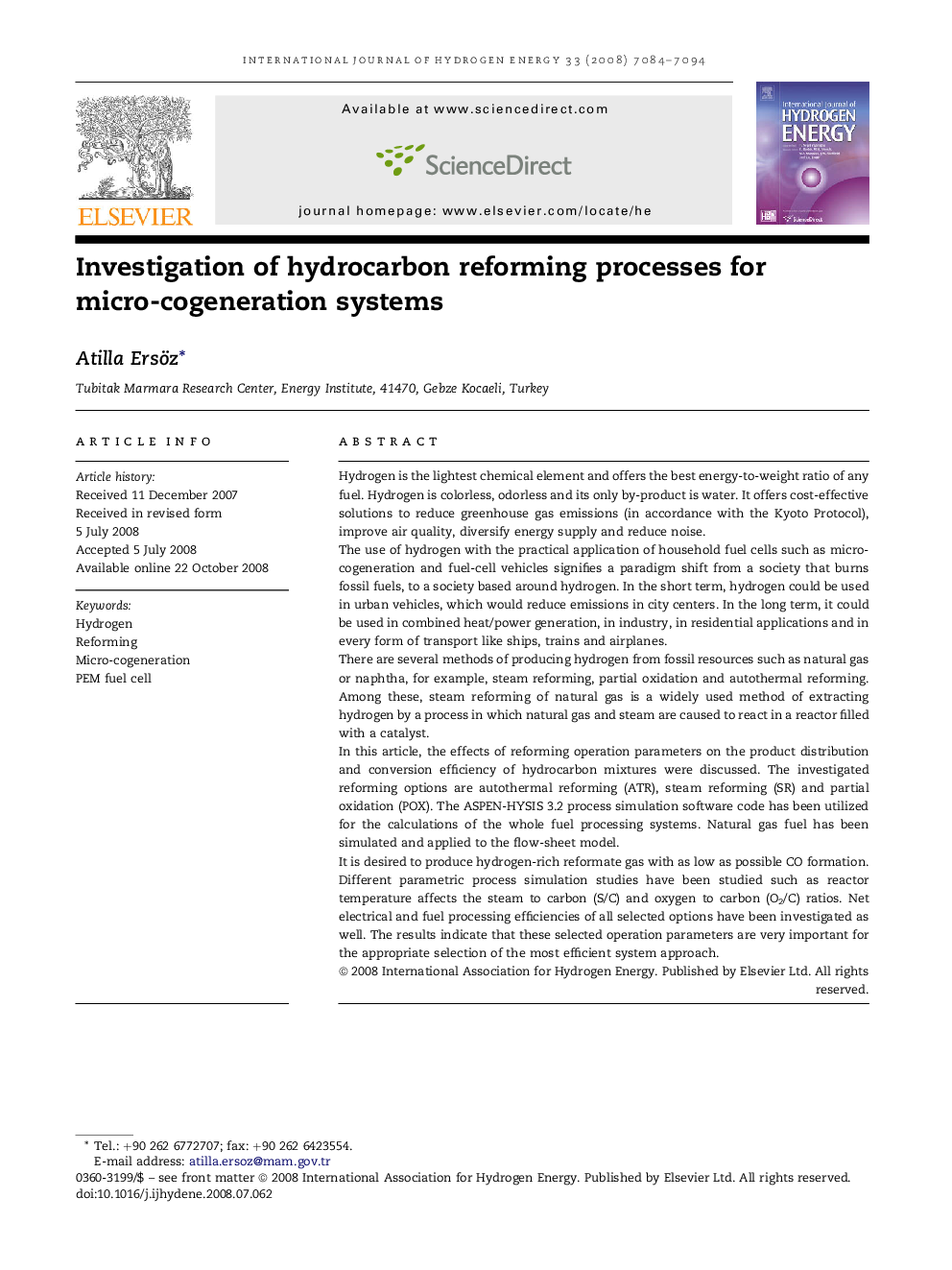| Article ID | Journal | Published Year | Pages | File Type |
|---|---|---|---|---|
| 1278250 | International Journal of Hydrogen Energy | 2008 | 11 Pages |
Hydrogen is the lightest chemical element and offers the best energy-to-weight ratio of any fuel. Hydrogen is colorless, odorless and its only by-product is water. It offers cost-effective solutions to reduce greenhouse gas emissions (in accordance with the Kyoto Protocol), improve air quality, diversify energy supply and reduce noise.The use of hydrogen with the practical application of household fuel cells such as micro-cogeneration and fuel-cell vehicles signifies a paradigm shift from a society that burns fossil fuels, to a society based around hydrogen. In the short term, hydrogen could be used in urban vehicles, which would reduce emissions in city centers. In the long term, it could be used in combined heat/power generation, in industry, in residential applications and in every form of transport like ships, trains and airplanes.There are several methods of producing hydrogen from fossil resources such as natural gas or naphtha, for example, steam reforming, partial oxidation and autothermal reforming. Among these, steam reforming of natural gas is a widely used method of extracting hydrogen by a process in which natural gas and steam are caused to react in a reactor filled with a catalyst.In this article, the effects of reforming operation parameters on the product distribution and conversion efficiency of hydrocarbon mixtures were discussed. The investigated reforming options are autothermal reforming (ATR), steam reforming (SR) and partial oxidation (POX). The ASPEN-HYSIS 3.2 process simulation software code has been utilized for the calculations of the whole fuel processing systems. Natural gas fuel has been simulated and applied to the flow-sheet model.It is desired to produce hydrogen-rich reformate gas with as low as possible CO formation. Different parametric process simulation studies have been studied such as reactor temperature affects the steam to carbon (S/C) and oxygen to carbon (O2/C) ratios. Net electrical and fuel processing efficiencies of all selected options have been investigated as well. The results indicate that these selected operation parameters are very important for the appropriate selection of the most efficient system approach.
